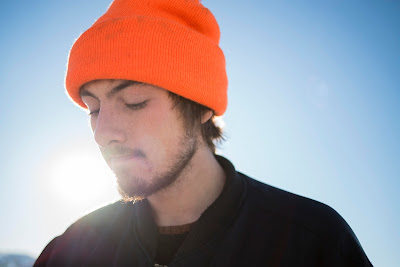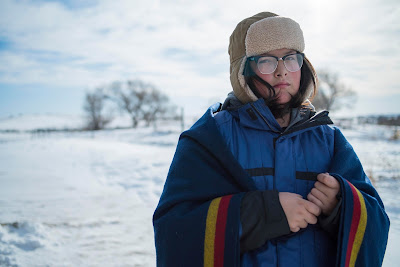Sunday, January 15, 2017
Wednesday, January 11, 2017
Pilgrims Progress - Word and Photo Essay (pc Judea aka LittleFighter)
Thanne longen folk to goon on pilgrimages,
And palmeres for to seken straunge strondes,
To ferne halwes, kowthe in sondry londes;
And specially from every shires ende
In my head, I've thought of the family trip to Standing Rock as a pilgrimage. I didn't express that - it seemed too silly to say out loud, but now that we are back, I have found that reviewing it as such has helped me be ok with my feelings and the results of our experience. It turns out my experience is not atypical at all. It follows the pattern of the pilgrimage. Learning this has somehow helped me feel whole.
PBS has a great definition of Pilgrimage on its Sacred Journeys page (http://www.pbs.org/wgbh/sacredjourneys/content/pilgrimage/). In its description, PBS lists 6 stages to a pilgrimage.
1. THE CALL. This is described as a longing or yearning.
We were not the only people to feel a call to the Cannon Ball river. The people we met in Oceti Shokowin expressed this same feeling. Before going north, my son Mason spoke to someone who spent months in the Red Warrior camp. She told him, "Everyone who feels the call should travel to Standing Rock." I have spent ample time in early blogs expressing the longing we all felt to go to Oceti Shakowin and add our prayers to those being uttered there.
2. THE SEPARATION. Separation comes from suspending day-to-day worries and placing your trust in a higher power.
Our pilgrimage to the Oceti Shakowin camp did one better. Even though I upgraded our phones to ensure better coverage out-of-state. We still found ourselves disconnected from the world wide web more often than not. This natural state of unplugged help me to suspend my worries of work and obligation and tomorrow. I was able to participate fully in the here and now.
3. THE JOURNEY. The rougher the journey, the more successful the pilgrimage.
From inception our journey has been about faith. The physical journey did not vary from that theme. We had originally planned to travel on Christmas day, but I was not able to reserve lodging. Christmas morning included a large snowstorm in Utah and a blizzard in North and South Dakota. We left the next day - glad to have missed the blizzard. The roads throughout the four states we traveled showed the aftermath of the winter storm. We had periods of drifting snow, flying rocks, and blowing snow so thick visibility extended to the length of an arm. We also had periods where the snow cleared and we saw bald eagles lift off from the roadside. Despite our hardships, we felt blessed and supported.
4. THE CONTEMPLATION While some pilgrims head straight for their goal, others take a round-about route.
We took detours on our way to and from Standing Rock. We went out of our way to visit the Wounded Knee Massacre Site. This was a solemn time of prayer and reflection, of gratitude and sorrow.
On the way home we made an impromptu visit to Devils Tower, a sacred site where prayers have been made for hundreds, if not thousands of years.
6. THE CONTEMPLATION and RETURN "At the culmination of the journey, the pilgrim returns home only to discover that meaning they sought lies in the familiar of one's old world."
This phase of our pilgrimage was the most surprising for me. Upon our return, I felt an emptiness where the yearning had been. Rather than wishing to return, my attitude had changed. I want to pray at home. I want to see what I can do locally, whether that be support calls for clean air and preservation of sacred sites in Utah, or to recommit myself to recycling and personal conservation efforts.
Thursday, January 5, 2017
Isak Dinesen Quotes - Standing Rock Edition
Isak Dinesen (the writer) has some great quotes.
The next two we met were a mother and daughter. As we descended the hill, they met us in their pickup truck. They had jewelry to sell. My daughter, Bobo, bought a necklace.
- The cure for anything is salt water — sweat, tears, or the sea.
- God made the world round so we would never be able to see too far down the road.
- Through all the world there goes one long cry from the heart of the artist: Give me leave to do my utmost.
I love these pearls, and perhaps they apply to the family's holiday trek. But my favorite is a Dinesen quote that she never actually said or wrote:
- All sorrows can be borne if you put them into a story or tell a story about them.
This is not to say that I am a "man of constant sorrow", but rather I find that stories help me distill meaning from events both mundane and sublime.
On the way to Standing Rock, we took a detour to Wounded Knee. Wounded Knee is a massacre site. On December 29, 1890 a large group of Ghost Dancers were surrounded by the 7th Calvary. Ghost Dancers believed their worship and dance would bring back the buffalo and those who had gone beyond the ridge.
The 7th Calvary demanded these dancers (mostly old men, women, and children) surrender their weapons. In the confusion a single shot rang out. The origin of this shot was never firmly established. The consequences of this shot, however, cry out from the red earth beneath the snow.
One hundred and forty six members of Big Foot's band fell to the Army's Hotchkiss guns.
We met four groups of people as we explored the the massacre site and prayed on the hill above, and so begins my parable.
The first we met was a single man. He walked halfway up the snowy hill to meet us. He told us he lived nearby. His truck needed gas. His home needed weathering. The people visiting this memorial were his family's main source of income. My son, Mason, gave him some cash.
The next two we met were a mother and daughter. As we descended the hill, they met us in their pickup truck. They had jewelry to sell. My daughter, Bobo, bought a necklace.
The third group we met was a family that spoke to my children.
"What did they say," I asked my girls.
"They were making sure we were ok," Bobo responded. "They wanted to make sure we weren't out of gas and that we had what we needed."
Bright and early on winter-crisp Tuesday morning, Wounded Knee was beginning to buzz with activity. The fourth couple that passed us, stopped to ask it the Dakota 38 + 2 riders were arriving that day. These riders travel on horseback through Mankota MN on December 26th to honor those 38 Dakota executed that day in 1862. On December 29th the riders arrive at Wounded Knee to mark the anniversary of those deaths. I let this couple know that the anniversary was still a couple of days away.
As I reflect back on our journey, I realize it was more about people than places. And people are people. Sometimes we struggle to survive. Other times we are able to reach out and ease our brothers burdens. Still other times we are able to lean back and enjoy the ride.
My son, Mason, has a solo project in which he performs under the name Wounded Knee. I filmed him singing Buffy St. Marie's song, "Wounded Knee" in the snow at Wounded Knee. At the same time, my daughter Judea was taking still photography. At a certain point this video turns into a visual essay on short people problems.
Subscribe to:
Posts (Atom)





















































